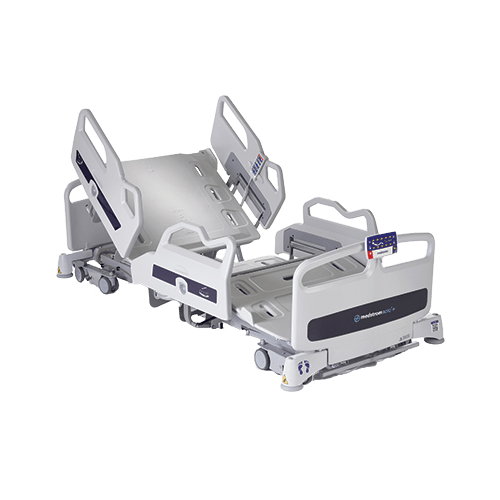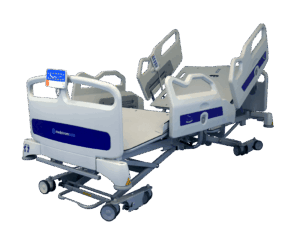
Complications of Immobility in the Elderly
Immobility in hospitalised elderly patients can lead to many complications and challenges. For example, it is known that older patients who are immobile are more likely to lose some of their capacity to perform activities of daily living during their stay in hospital.1,2
Management of immobility in the elderly hospital population is key in ensuring they don’t suffer from loss of muscle mass and strength (deconditioning), leading to greater physical dependency. Deconditioning is one of the most common reasons for prolonged length of stay in hospitals.3
In addition to deconditioning, prolonged immobility is associated with increased fatigue, low self-esteem and loss of confidence. This can increase the risk of falls and the development of pressure ulcers.4,5
Mobility is important because it helps to maintain health and the body’s ability to heal and repair. When in-patients are immobile, every body system is adversely affected. This can result in severe complications including:6
- Dehydration, resulting in fluid and electrolyte imbalance
- Increased blood viscosity, which increases the risk of DVT / PE development
- Cardiac deconditioning
- Respiratory infections
- Musculoskeletal deconditioning and contractures
- Constipation
- Urinary tract stasis and infection
- Pressure ulcers
- Anxiety and depression
Research has shown that a length of stay in hospital over 10 days can lead to 10 years of muscle ageing for patients who are aged over 80 years.7 The research also showed that 35% of 70-year-old in-patients experience functional decline during their hospital admission in comparison with their pre-illness baseline. For people aged over 90 this increases to 65%.8
It is clear that early mobilisation is a crucial factor in reducing the risk of these complications associated with immobility and should form a key part of the patient’s care plan. Early mobilisation helps to reduce the length of hospital stay, achieving a more positive patient outcome and reducing costs.
The Effects of Immobility on Body Systems
There are other factors to consider when it comes to immobility complications. One of the biggest issues that come with immobility is cardiovascular system complications. Interestingly, three weeks of bed rest can leave a patient’s cardiovascular system to decline similar to that of 40 years of ageing.9 This is due to the structural changes that are undergone during stages of immobility, such as the reduction of venous return (the blood flow between the veins and atria), and increased heart rate and cardiovascular deconditioning – a declining function of the heart and blood vessels.
Immobility can cause complications with the respiratory system too, with the potential to cause changes in lung volumes. When a patient is in the supine position for a prolonged amount of time, it can affect the movement of the ribcage and consequently the lung volume can decrease and cause the lungs to potentially collapse.
Additionally, in terms of respiratory complications, a potential long-term issue is acute respiratory distress syndrome (ARDS) which leads to less oxygen being delivered to the tissues in the body, and can usually result in damage caused by hypoxia to major organs.
There are a variety of other complications that come with prolonged periods of immobility. Read our series of immobility complications here:
1. Cardiovascular
2. Respiratory
3. Haematological
4. Gastrointestinal & Renal
5. Musculoskeletal & Bones
Hospital beds which are able to achieve a low height can assist with earlier and safer mobilisation, as they allow more elderly patients to place their feet flat on the floor before standing. Learn about the Medstrom Solo + bed here:












